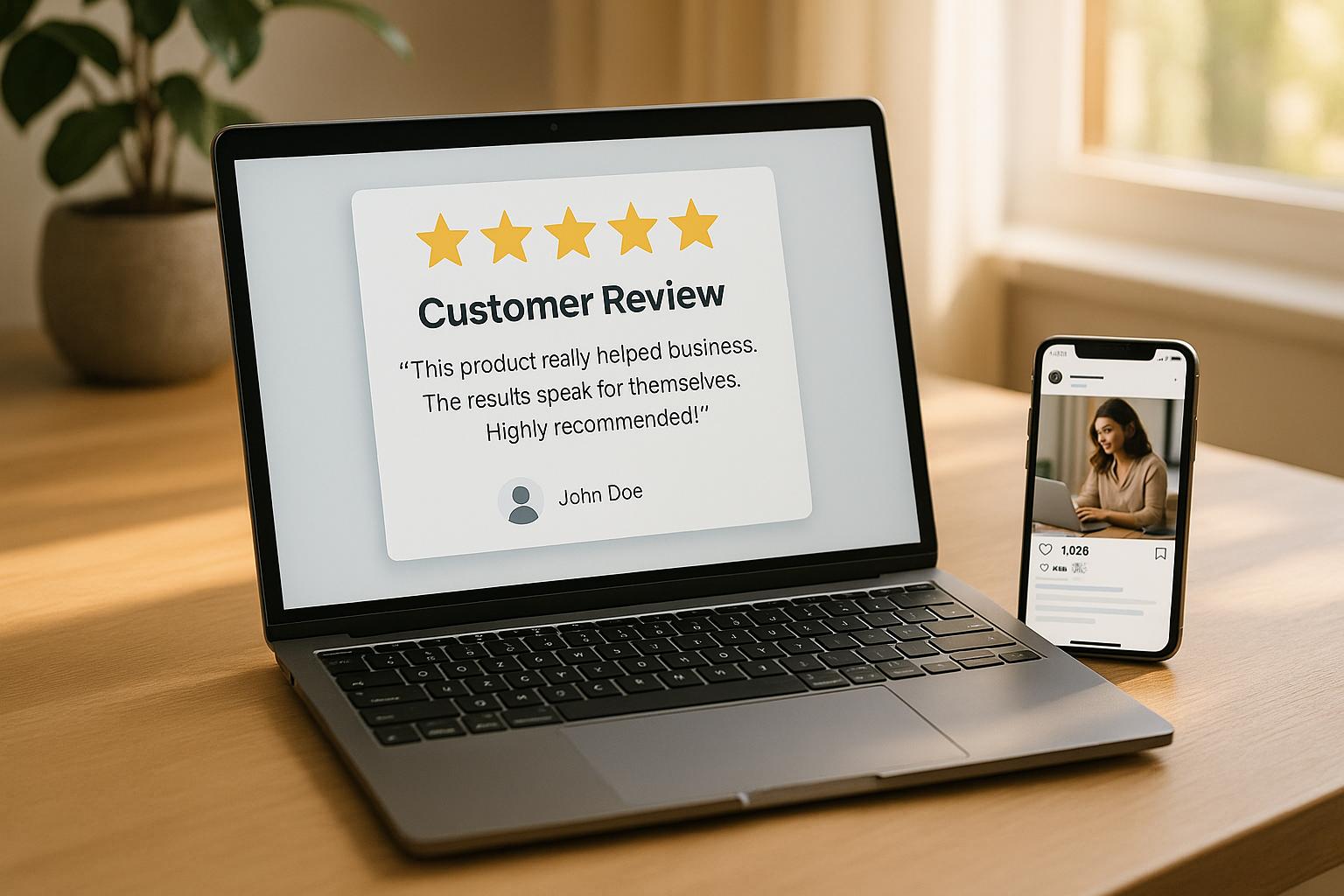Dynamic Creative Optimization (DCO) uses real-time data to create personalized ads for users. Instead of showing the same ad to everyone, DCO customizes elements like images, text, and offers based on user behavior, location, device type, and more. This leads to higher engagement, better targeting, and improved ad performance.
Key Benefits of DCO:
- Real-Time Personalization: Ads adjust instantly based on user data.
- Efficiency: Automates creating multiple ad versions.
- Cost Savings: Focuses on top-performing combinations.
- Scalability: Easily manages large campaigns.
How It Works:
- Data Signals: Uses behavioral, contextual, technical, and campaign data.
- Ad Assembly: Combines creative assets (images, text, buttons) dynamically.
- Testing & Optimization: Continuously tests and improves ad performance.
Where It Shines:
- E-commerce: Updates pricing and promotions in real-time.
- Location-Based Ads: Tailors content based on weather, events, or store details.
- Cross-Device Campaigns: Optimizes ads for different devices and platforms.
DCO transforms advertising by making ads more relevant, improving targeting, and reducing manual effort. It's a must-have tool for modern marketers aiming to deliver better results.
Dynamic Creative Optimization (DCO) & Programmatic ...
DCO Fundamentals
Dynamic Creative Optimization (DCO) changes the game in digital advertising by using real-time user data to create and deliver personalized ads. Here's a closer look at how DCO works, its advantages over static ads, and where it shines.
What DCO Does
DCO uses different types of data to assemble creative elements tailored to each user:
| Data Signal Type | Examples | Purpose |
|---|---|---|
| Behavioral Data | Browse history, purchase patterns | Identify user preferences |
| Contextual Data | Time, weather, location | Make ads more relevant to the user's situation |
| Technical Data | Device type, screen size | Optimize ad display for the user's device |
| Campaign Data | Click rates, conversion metrics | Improve ad performance based on past results |
DCO vs Static Advertising
How does DCO stack up against traditional static ads? Here's a quick comparison:
| Feature | Static Ads | Dynamic Creative Optimization |
|---|---|---|
| Personalization | Same ad for everyone | Customized for each user or segment |
| Testing | Manual A/B testing required | Automated multivariate testing |
| Update Speed | Changes take days or longer | Updates happen instantly |
| Scale | Limited by manual processes | Can generate thousands of variations automatically |
| Performance Insights | Delayed reporting | Real-time feedback for immediate action |
This flexibility and speed make DCO a powerful tool for advertisers looking to stay competitive.
Where to Use DCO
1. E-commerce Product Advertising
DCO can dynamically update pricing, availability, and promotional messages while keeping your branding consistent. This ensures shoppers see the most relevant offers in real time.
2. Location-Based Marketing
Ads can be tailored to local conditions, such as:
- Store inventory
- Regional pricing
- Weather
- Local events or promotions
- Store hours and contact details
This approach helps create a stronger connection with local audiences.
3. Cross-Device Campaigns
DCO fine-tunes ad elements for different devices and platforms by:
- Adjusting image sizes and resolutions
- Moving call-to-action buttons for better visibility
- Modifying text length and formatting
- Improving load times
With these optimizations, your ads maintain consistent messaging and deliver strong results across all channels. DCO has become a must-have for modern advertising strategies.
DCO Technical Process
Data Collection Methods
DCO systems collect data from various sources to create detailed user profiles:
| Data Source | Collection Method | Purpose |
|---|---|---|
| First-Party Data | Website cookies, CRM systems | Tracking user behavior |
| Third-Party Data | Data management platforms | Audience segmentation |
| Real-Time Signals | API integrations | Contextual targeting |
| Campaign Data | Ad platform analytics | Improving performance |
Machine learning processes this data to identify the best creative elements for each audience group. The platform then uses this information to dynamically assemble ad components.
Ad Component Assembly
The DCO system breaks ads into modular parts for quick and efficient assembly:
1. Creative Asset Library
This is the core of ad assembly, containing:
- Product images and videos
- Headlines and body text
- Call-to-action buttons
- Background designs
- Discount or promotional details
2. Dynamic Rules Engine
The rules engine decides how to combine components based on factors like:
- Demographics and user behavior
- Geographic location
- Time of day
- Device type
- Prior user interactions
3. Real-Time Assembly
For every ad impression, the system evaluates user data, selects the best components, assembles the ad in milliseconds, and delivers tailored content.
Once ads are assembled, continuous performance testing ensures that each version is optimized for maximum effectiveness.
Performance Testing
DCO platforms use ongoing testing to fine-tune ad performance:
| Testing Type | Purpose | Optimization Approach |
|---|---|---|
| Multivariate Testing | Test multiple creative setups | Automate element pairing |
| Sequential Testing | Assess new creative ideas | Gradual testing of updates |
| Audience Response | Track engagement metrics | Real-time adjustments |
| Creative Fatigue | Spot declining performance | Rotate creatives as needed |
Key performance metrics include:
- Click-through rates
- Conversion rates
- Engagement duration
- Return on ad spend
- Cost per acquisition
sbb-itb-89b8f36
DCO Results and Outcomes
DCO delivers measurable results through its precise and efficient approach to digital advertising.
Better Ad Targeting
DCO improves ad targeting by creating personalized ads tailored to specific user preferences and behaviors. Its automation tools generate multiple ad variations, helping advertisers connect with their audience more effectively. This leads to higher click-through and conversion rates while keeping costs in check.
Scaling Campaigns Faster
DCO platforms simplify managing large-scale campaigns across various channels. With automation, marketers can quickly launch, test, and tweak creative elements to suit different regions or audiences. This reduces the time spent on tasks like ad creation, A/B testing, and performance analysis. As a result, campaigns can grow and adapt more efficiently, ensuring they stay relevant and effective.
Real-Time Performance Updates
DCO systems continuously track how campaigns are performing and make instant adjustments to keep ads effective. Here's how they do it:
- Real-Time Bidding Adjustments: Budgets and bids are fine-tuned immediately based on user engagement and the likelihood of conversions.
- Creative Optimization: Underperforming ad elements are replaced with new variations to maintain effectiveness.
- Audience Insights: Engagement data is analyzed to refine audience segments and update targeting strategies.
This ability to make instant updates ensures campaigns remain optimized, addressing the limitations of static advertising methods.
DCO Implementation Guide
Set clear, measurable goals for your dynamic creative optimization (DCO) campaigns to ensure the best creative elements are used effectively.
Campaign Objectives
Here are some common goals for DCO campaigns:
- Conversion Rate: Define specific targets for converting viewers into customers.
- Brand Awareness: Measure ad recall and brand recognition.
- Customer Engagement: Track metrics like click-through rates and interaction times.
- Revenue Growth: Set revenue goals tied directly to ad performance.
Make sure your objectives align with your broader marketing strategy and can be tracked through your analytics tools. Be specific about what counts as a conversion (e.g., purchases, sign-ups) and set achievable targets based on historical data.
Once your goals are set, create a content library tailored to your campaign needs.
Ad Content Library Setup
Build a well-organized content library to streamline your DCO efforts.
Creative Assets
- Multiple headline variations (5–10 options)
- Image sets showcasing products in various scenarios
- Call-to-action buttons with different messaging
- Product descriptions in varying lengths and tones
Audience Segments
- Demographics like age, location, and income
- Behavioral data such as browsing and purchase history
- Interests, including hobbies or preferences
- Device types (mobile, desktop, tablet)
Use clear naming conventions and tags to make it easier for the DCO system to match content with the right audience.
Performance Tracking
Once your objectives and content are in place, focus on tracking results.
1. Key Performance Indicators
Monitor these key metrics:
- Click-through rate (CTR)
- Conversion rate
- Cost per acquisition (CPA)
- Return on ad spend (ROAS)
2. Testing Framework
- Conduct A/B tests for individual creative elements.
- Track performance across different audience groups.
- Identify which combinations work best.
- Document insights to improve future campaigns.
3. Optimization Schedule
Set a regular schedule for reviewing and optimizing your campaign:
- Daily: Check basic metrics.
- Weekly: Analyze overall performance.
- Monthly: Make strategic adjustments.
- Quarterly: Reassess goals and progress.
Use your analytics tools to create custom dashboards that highlight your most important metrics. This makes it easier to spot trends and make quick adjustments to improve results.
What's Next for DCO
AI in Ad Creation
AI is reshaping how dynamic creative optimization works. It processes large amounts of data to predict which creative elements will connect best with specific audiences. These systems can automatically craft personalized ad copy, choose the right image combinations, tweak color schemes and layouts in real time, and even estimate engagement rates before an ad goes live. Plus, they keep learning from performance data, picking up on subtle user behavior patterns that might otherwise be missed.
Privacy Updates
As third-party cookies disappear, DCO platforms are shifting to rely more on first-party data and privacy-compliant tracking methods. This includes improved server-side tracking, contextual targeting, privacy-focused APIs, and collaborations with data clean rooms. To stay ahead, advertisers need to focus on building direct relationships with their audiences, which often means investing in CDPs to securely gather and activate first-party data. These advancements are setting the stage for stronger and more cohesive multi-channel strategies.
Multi-Platform Branding
Today’s DCO systems help brands maintain consistent messaging across various platforms while tailoring content to meet each platform's specific requirements. These tools combine intelligent asset management with centralized performance tracking, handling tasks like resizing images, adjusting text, and converting formats automatically. They also adapt creative elements based on factors like screen size, viewing environment, and user context, ensuring ads perform well on smartphones, desktops, or even digital billboards.
Marketers looking to tap into these trends and streamline their campaigns can find helpful tools and insights through the curated options in the Top PPC Marketing Directory.
Conclusion
Key Takeaways
DCO changes the game in digital advertising by using real-time data to adjust creative elements based on user behavior. It’s come a long way, moving from simple A/B testing to advanced AI-driven decision-making, making ads more relevant to specific audiences. Each stage - data collection, analysis, and real-time creative assembly - plays a role in making DCO effective.
This technology now places a stronger focus on privacy by using first-party data and contextual insights, while also ensuring consistent messaging across platforms. These factors are key when choosing and using the right DCO solutions.
DCO Tools and Services
The Top PPC Marketing Directory offers a curated list of DCO platforms, tools, and services to help you find the right fit for your needs. Whether you’re starting with basic creative tests or diving into AI-powered personalization, there’s a solution available for every requirement and scale.
As AI and privacy features in DCO continue to improve, staying up-to-date with new tools and strategies is essential. Pairing a solid DCO strategy with the right tools ensures you stay competitive in the fast-evolving world of digital advertising. Use these resources to bring the dynamic strategies discussed earlier to life.


